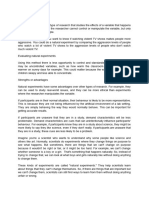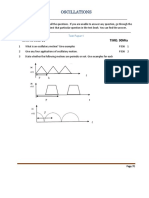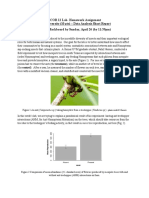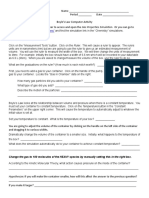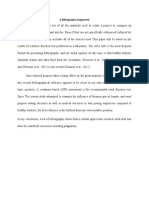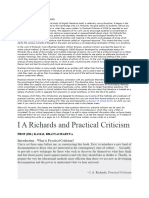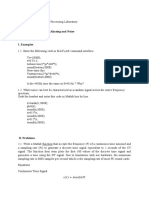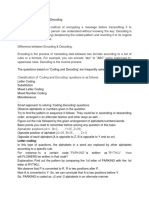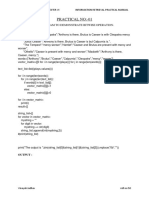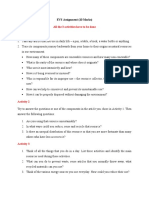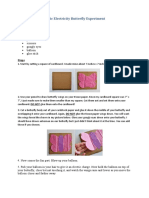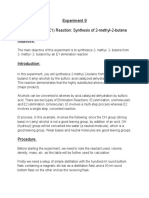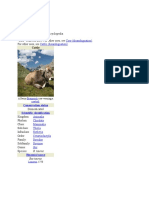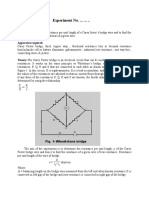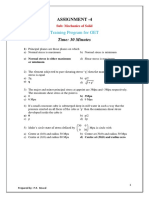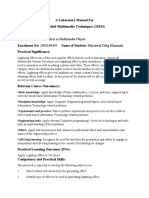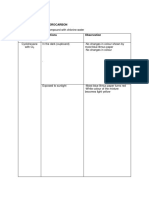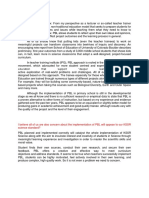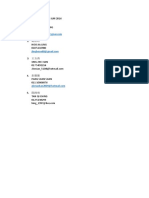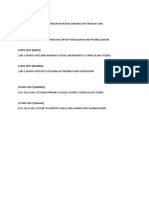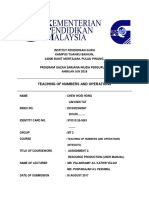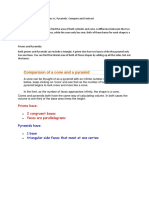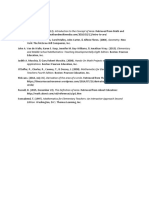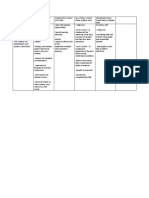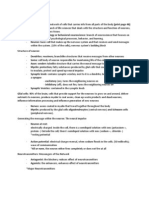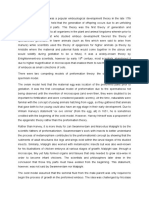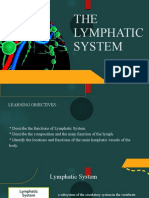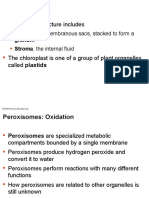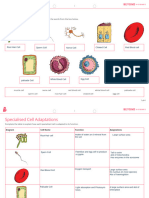Practical 2
Background information:
Cell Structure and Cell Organisation
All living things are made up of basic units called cells. Cells which have become
specialised to carry out particular tasks are organised into tissues. A tissue is a group of cells
which are similar in structure and perform specific function. An example is the muscle tissue.
Different types of tissues come together to forms organs. An organ is a group of different
tissues that work together to carry out a function. Several organs are organised into a
system, for example, the digestive system or the respiratory system. Various systems make
up the organism. In this case, cell specialisation is a process of change and adaptation that a
cell undergoes to give it special structures and specific functions. It gives rise to various
types of cells in a multicellular organism.
Respiratory and Breathing System
Respiration is an important living process carried out by all living organisms.
Respiration can be divided into two stages which are external and internal. External
respiration or breathing is a mechanical process that maintains a continuous exchange of
gases between the respiratory surfaces of an organism and its environment. Meanwhile,
internal respiration or cellular respiration is the biological process in which energy is made
available to all living cells. This process involves the oxidation of organic molecules to
release energy stored within these molecules.
Circulatory System
The circulatory system of an organism is important in delivering nutrients and oxygen
to cells, carrying waste products away from cells as well as protecting the body from
infections. The circulatory system consists of three components. The blood is a type of
connective tissue made up of plasma, blood cells and platelets. Blood acts as a medium of
transport. The heart functions as a muscular pump that circulates the blood throughout the
body. The blood vessels consist of arteries, capillaries and veins that are connected to the
heart to deliver blood to all body tissues. The circulatory system of large multicellular
organisms can be divided into two types. In an open circulatory system, blood is pumped
directly into the body cavity. In a closed circulatory system, blood is pumped into blood
vessels.
1
�Support system Humans and Animals
Locomotion refers to the ability of a whole organism to move from one place to
another. Movement refers to a change in position of any part of an organisms body but it
does not necessarily involve locomotion. An example is the movement of our arms.
Multicellular organisms have soft and collapsible body tissues which need to be held in a
rigid frame and be supported. Support is provided by a framework called a skeleton. There
are three types of skeletons in animals including exoskeleton, endoskeleton and hydrostatic
skeleton. The human skeleton consists mainly of bones but a few part such as the nose,
ears and the soft discs between the vertebrae are made of cartilage. The skeleton has two
main parts: the axial skeleton and the appendicular skeleton.
Aim:
To study animal (human) physiological system.
Problem Statement:
What are the significance of physiological system to animal or human?
Procedures:
1. Students are divided into three groups.
2. There are four stations are set up by students and the lab assistants before the
practical activity started. The four stations including:
First station : Cell structure and cell organisation
Second station : Circulatory system
Third station : Respiratory and Breathing system
Forth station : Support system
3. Every group are required to go through all the stations by doing observation to the
models and specimens with the correct ways.
4. Students need to write down and sort the information and analyse critically.
Cell structure and cell organisation
2
�Materials and apparatus: 4 different specimens in glass slide (capillary, ovum, ovary and
blood cells)
i. Four different specimen are prepared.
ii. Observe each of the specimen carefully under the electronic light microscope.
iii. The slide is observed under the low-power objective lens of the light microscope and
then the high power objective lens.
iv. Record all of the observation.
Circulatory system
i. Switch on the model of cardinal pulse and blood circulation.
ii. Observe the blood flow and the heart pumping in the system.
iii. Identify the name of specific parts of the human heart.
iv. Record all of the observation.
Respiratory and Breathing system
i. Switch on the human breathing mechanism model.
ii. Observe the changes occurred to lungs, ribcage, intercostal muscles and diaphragm.
iii. Record the observations.
Support system
i. Observe and identify the human skeleton (endoskeleton)
ii. Compare the human skeleton model to one of a group member.
iii. Record the observations.
Observations, analysis and discussion:
Cell structure and cell organisation
3
� Capillary, ovum, ovary and blood cells
The slide is observed under the low-power objective lens.
Bl
o od
cell (erythrocyte) Ovary
Capillary
4
� Ovum
Human capillary, ovum, ovary and blood cells do not have a fixed shape. The
structures of human cells as seen under the light microscope are the plasma membrane,
cytoplasm and nucleus. Observations showed that human erythrocyte is shaped like a
biconcave disc and do not contains nucleus. These characteristics give an erythrocyte a
large surface area to volume ratio for the rapid gases diffusion. Meanwhile, human blood
capillaries are made up of endothelial cells, the flat cells that line all blood vessels. The cell
walls are very thin to allow substances to easily and quickly diffuse. On the other sides, the
ovum has no tail. Its movement is facilitated by the cilia of oviducts. Ovum is bigger in size
compare to other cells it is form in the ovary by the process oogenesis. Ovary cells are
whitish in colour and it is protected by a layer of endothelial cells.
Circulatory system
Vena cava Pulmonary
vein
Aorta
PulmonaryLeft atrium
Right
atrium
Bicuspid
valve
Tricuspid
valve
Left
ventricle
Right Semilunar
Human Heart
ventricle Septu valve
m
5
� Lung
Heart
Vein
Artery
Systemic and Pulmonary blood circulation system
From the observations, we can know that humans have a four chambered heart: two
atria and two completely separated ventricles. In this case, deoxygenated blood and
oxygenated blood do not mix. In pulmonary circulation, deoxygenated blood in the right
ventricles is pumped into pulmonary arteries. These arteries carry the blood to the lungs
where it passes through the blood capillaries. This allows the removal of carbon dioxide and
the intake of oxygen from air into the alveoli. In the systemic circulation, blood is carried from
the heart to other parts of the body except lungs. The oxygenated blood from the lungs
returns to the left atrium and flows into the left ventricle. The oxygenated blood is then
pumped into the systemic capillaries via the aorta.
The human heart has valves that allow blood to flow on one direction only. The valve
between the right atrium and right ventricle is the tricuspid valve while the valve between the
left atrium and left ventricle is called bicuspid valve. The semilunar valves is located at the
exits, where pulmonary artery and aorta leaves the heart.
Moreover, we can know that there are two separate circulations which are the
systemic and pulmonary circulations. Hence, human have a double closed circulatory
system. This means that in a complete circulation, the blood flows through the heart twice.
This double circulation ensures that oxygenated blood is constantly delivered to the cells.
Respiratory and Breathing system
Trach6
ea
� lung
Sternum
Human
breathing Intercostal
Diaphrag
muscle
mechanism m
Ribs Exhalati
Inhalatio
model. on
n
The breathing
mechanism model
gave us an idea regarding the inhalation and exhalation.
From there, during inhalation we can see the external intercostal muscle contract while the
internal intercostal muscles relax. This action causes the ribcage to move upwards and
outwards. At the same time, the diaphragm muscles contract. The diaphragm lowers and
flattens. These two actions cause the volume of the thoracic cavity to increase and its
pressure to decreases. Higher atmospheric pressure on the outside forces the air into the
lungs resulting the inhalation.
On the other side, from the breathing mechanism model, we also can notice to
changes that occur during exhalation. The external intercostal muscles relax while the
internal intercostal muscles contract. This action causes the rib cage to move downwards
and inwards. At the same time, the diaphragm muscles relax. Volume of the thoracic cavity
decrease, and the pressure of thoracic cavity increases. Higher atmospheric pressure inside
the lungs forces the air out of the lungs.
Support system in Humans and Animals
7
� Comparison a human being to a skeleton model
Skull
Scapu
Clavic
Humerus
RIbs
Sternum
Vertebral
Ulna Column
Radiu
Carpal
Metacarpal
Femur Phalanges
Tibia Patell
Fibula Tarsal
Metatarsals
Phalanges
The skeleton model gave an idea about endoskeleton consists of a rigid framework
made of bones and cartilage to which muscles are attached. Besides, human depend on
8
�bones for our locomotion and movement. Human skeleton plays an important role in
maintaining the body shape, supporting the soft body tissues as well as protecting the
internal organs from injury.
The endoskeleton of vertebrates consists of an axial skeleton and an appendicular
skeleton. The axial skeleton is made up of the skull, sternum and ribs as well as vertebral
column. In this case, a typical vertebra has a centrum, an opening called vertebrae foramen
and processes. The spinal cord goes through the vertebral foramen. This skeleton provides
the general framework from which the appendicular skeleton hangs. The appendicular
skeleton consists of the pelvic girdle, pectoral girdle, and the appendages (arms and legs).
After comparing the model skeleton to one of a member, we found out that the ratio
and the bone parts in both are similar which lead to the assumption that the model skeleton
actually is set up and made based on the real skeleton frame.
Throughout the practical, our lecturer had played some background music in the
science lab. This is because music can stabilize our mental, physical and emotional rhythms
to attain a state of deep concentration and focus in which large amounts of content
information can be processed and learned. Moreover, by using music for learning makes the
whole practical process much more fun and interesting.
Conclusion:
All animals have their very own physiological system including circulatory system, support
and locomotion system, respiratory and breathing system and so on. At the same time, each
of these systems performs the same general function within individual in the many different
species.
